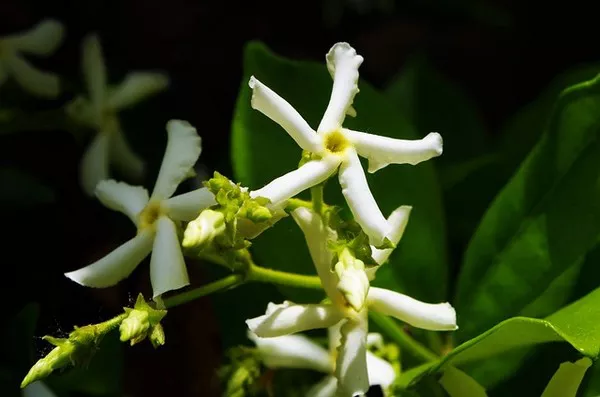Plants, often referred to as the lungs of our planet, play a vital role in maintaining the delicate balance of Earth’s atmosphere. While plants do not possess lungs in the way animals do, they have their unique way of “breathing” through a process called respiration. In this article, we will explore the fascinating mechanisms by which plants exchange gases, absorb oxygen, and release carbon dioxide, shedding light on how they contribute to the overall health of our environment.
Plant Respiration: The Basics
Plant respiration is a fundamental process that allows plants to obtain the oxygen they need for survival while also releasing carbon dioxide, a byproduct of their metabolic activities. This process is critical for the plant’s growth, development, and energy production. Plant respiration can be broken down into two main phases: internal respiration and external respiration.
Internal Respiration
Internal respiration occurs within plant cells, primarily in specialized organelles called mitochondria. Mitochondria are often referred to as the “powerhouses” of the cell because they generate energy through the process of cellular respiration. In this phase, plants take in oxygen and release carbon dioxide as they metabolize energy from sugars and other organic compounds.
The chemical equation for internal plant respiration is as follows:
C6H12O6 (glucose) + 6O2 (oxygen) → 6CO2 (carbon dioxide) + 6H2O (water) + energy
During internal respiration, oxygen is consumed while carbon dioxide is produced, leading to the release of energy that powers various cellular functions, such as growth, maintenance, and reproduction.
External Respiration
External respiration in plants involves the exchange of gases with the surrounding environment. Unlike animals with specialized respiratory organs like lungs, plants lack such structures. Instead, they rely on small openings in their leaves, stems, and roots called stomata to facilitate gas exchange. These stomata play a crucial role in regulating the balance between oxygen intake and carbon dioxide release.
How Plants Breathe In
The process of how plants breathe in oxygen is intrinsically connected to external respiration, particularly through the role of stomata and diffusion. Stomata are tiny pores found on the surface of plant leaves, stems, and, to a lesser extent, on roots. These pores open and close in response to various environmental factors, ensuring that plants can effectively regulate their gas exchange.
Stomatal Regulation
Stomatal regulation is a complex process controlled by various external factors, including light, temperature, humidity, and carbon dioxide levels. When stomata open, they allow for the exchange of gases between the plant and the atmosphere. This is particularly important for oxygen uptake. During daylight hours, plants typically open their stomata to take in carbon dioxide for photosynthesis and, in the process, they also absorb oxygen.
Diffusion
Once the stomata open, oxygen from the atmosphere diffuses into the plant’s internal tissues, moving from areas of higher oxygen concentration to areas of lower oxygen concentration. This passive process relies on the principles of diffusion and the partial pressure of gases. The oxygen is then transported to the mitochondria within plant cells, where it is used for cellular respiration.
How Plants Breathe Out
While plants breathe in oxygen and use it for respiration, they simultaneously release carbon dioxide into the atmosphere through the process of external respiration.
Carbon Dioxide Release
Carbon dioxide is a natural byproduct of the metabolic processes occurring within plant cells. As plants consume sugars and other organic compounds during respiration, they generate carbon dioxide as a waste product. This carbon dioxide is released into the surrounding air through the stomata, where it can be taken up by neighboring plants or be absorbed by the atmosphere. The release of carbon dioxide is a continuous process that occurs day and night, although it may vary in intensity depending on environmental conditions.
Environmental Impacts of Plant Respiration
Understanding how plants breathe in and out has far-reaching implications for our environment and its health.
1. Carbon Sequestration
Plants act as natural carbon sinks through the process of photosynthesis. They absorb carbon dioxide from the atmosphere and convert it into organic compounds, helping to mitigate the greenhouse effect and reduce atmospheric carbon dioxide levels. Simultaneously, through respiration, they release carbon dioxide back into the atmosphere. The balance between carbon uptake and release determines the net carbon sequestration capacity of plants, making them crucial players in climate change mitigation.
2. Oxygen Production
By taking in carbon dioxide and releasing oxygen during photosynthesis, plants contribute significantly to the oxygen content of the Earth’s atmosphere. This is essential for the survival of most living organisms, as oxygen is the primary source of energy for respiration in animals.
3. Air Quality
Plant respiration also plays a role in improving air quality. Plants help to filter the air by removing pollutants and particulate matter from it. They absorb pollutants through their stomata and store them in their tissues, thus enhancing the overall quality of the air we breathe.
Conclusion
Understanding how plants breathe in and out through the processes of internal and external respiration is crucial for appreciating the vital role they play in our ecosystem. Plants not only provide us with the oxygen we need to breathe but also help to regulate the levels of carbon dioxide in the atmosphere, contributing to climate stability. As we continue to face environmental challenges, it is increasingly important to protect and preserve our plant life, recognizing the intricate mechanisms that allow them to thrive and support life on Earth.


